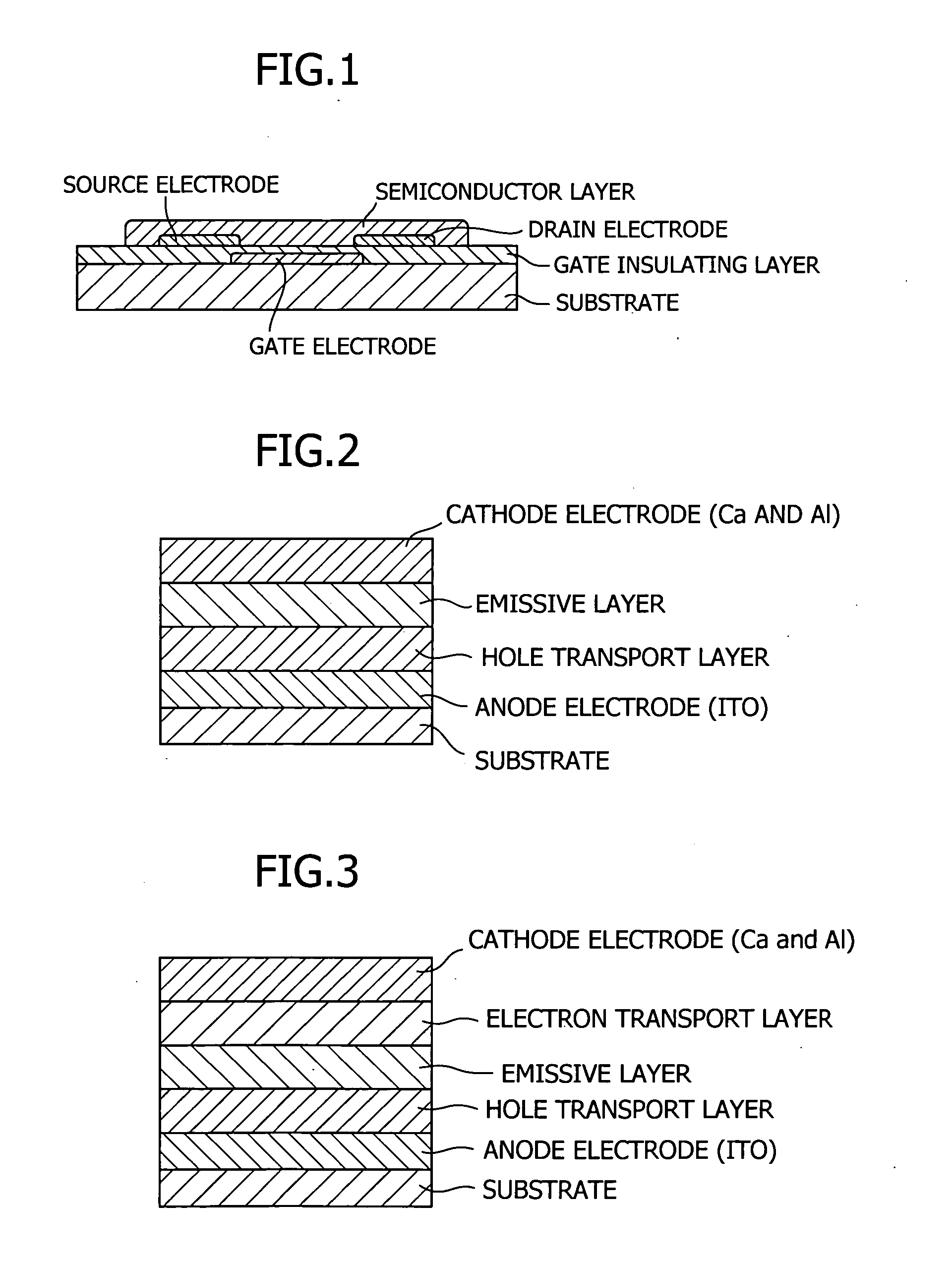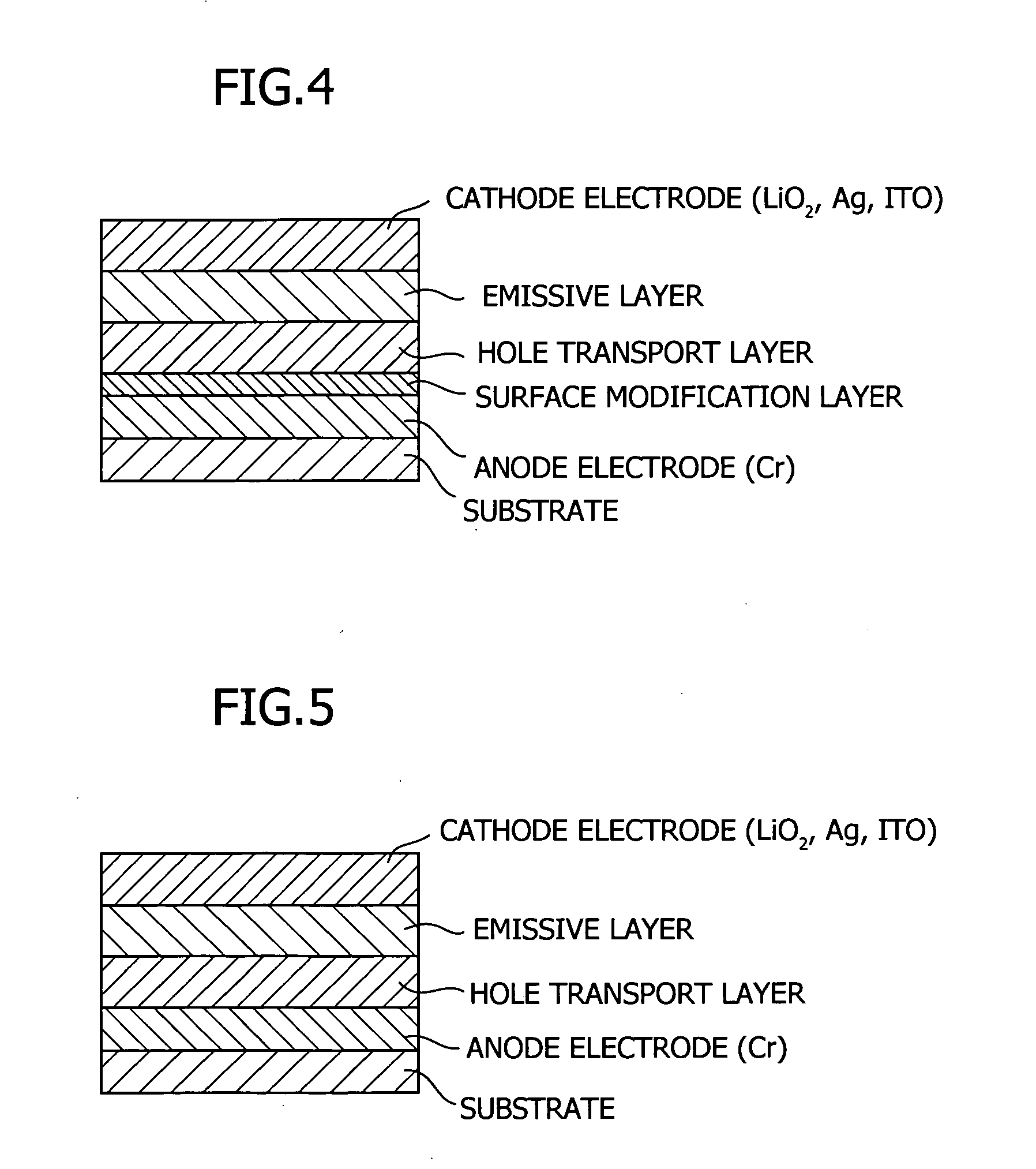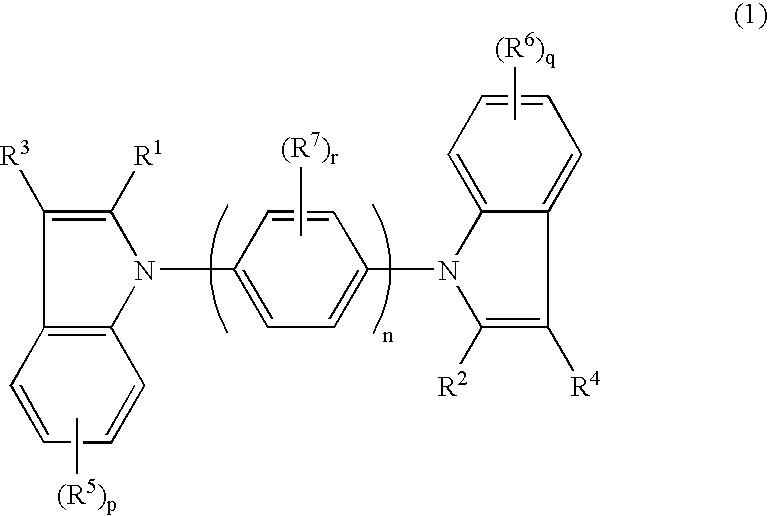Tertiary amine compounds, organic semiconductor devices using the same and organic electroluminescence devices using the same
a technology of organic semiconductor and tertiary amine, which is applied in the direction of thermoelectric devices, organic semiconductor devices, discharge tube luminescnet screens, etc., can solve the problems of affecting the overall electrical conduction and voltage response of the device, the deterioration of the device performance, and the drastic increase in the consumption of power, so as to improve the overall electrical conduction and voltage response, the effect of high durability
- Summary
- Abstract
- Description
- Claims
- Application Information
AI Technical Summary
Benefits of technology
Problems solved by technology
Method used
Image
Examples
synthesis example 1
[0314] In 50 mL of dehydrated xylene were dissolved 0.04 g of palladium acetate and 0.12 g of tri-t-butylphosphine. To the resulting solution were added 0.90 g of 4,4-dibromobiphenyl, 1.40 g of 2-(2-naphthyl)indole and 0.65 g of sodium-t-butoxide, followed by heating under reflux at 125° C. for 24 hours in a nitrogen atmosphere. Chloroform and water were added to the reaction mixture and the resulting mixture was filtered. After the organic layer thus extracted was dried over magnesium sulfate, the solvent was distilled off under reduced pressure to give 0.70 g of a desired compound represented by the formula (142) in the crude form. The resulting compound was purified by column chromatography using a 1:1 chloroform and n-hexane mixture, followed by recrystallization from methanol to give 0.51 g of the desired compound represented by the formula (142). Nuclear magnetic resonance [1H-NMR] (solvent: CDCl3, internal standard: tetramethylsilane) and infrared absorption spectrum ([IR] (K...
synthesis example 2
[0316] In 50 mL of dehydrated xylene were dissolved 0.04 g of palladium acetate and 0.12 g of tri-t-butylphosphine. To the resulting solution were added 0.90 g of 4,4-dibromobiphenyl, 1.40 g of 2-(1-naphthyl)indole and 0.65 g of sodium-t-butoxide, followed by heating under reflux at 130° C. for 32 hours in a nitrogen atmosphere. Chloroform and water were added to the reaction mixture and the resulting mixture was filtered. After the organic layer thus extracted was dried over magnesium sulfate, the solvent was distilled off under reduced pressure to give 0.74 g of a desired compound represented by the formula (143) in the crude form. The resulting crude compound was purified by column chromatography using a 1:1 chloroform and n-hexane mixture, followed by recrystallization from methanol to give 0.57 g of the desired compound represented by the formula (143). Nuclear magnetic resonance [1H-NMR] (solvent: CDCl3, internal standard: tetramethylsilane) and infrared absorption spectrum ([...
synthesis example 3
[0317] In 50 mL of dehydrated xylene were dissolved 0.04 g of palladium acetate and 0.12 g of tri-t-butylphosphine. To the resulting solution were added 0.90 g of 4,4-dibromobiphenyl, 1.11 g of 2-phenylindole and 0.65 g of sodium-t-butoxide, followed by heating under reflux at 120° C. for 20 hours in a nitrogen atmosphere. Chloroform and water were added to the reaction mixture and the resulting mixture was filtered. After the organic layer was extracted and dried over magnesium sulfate, the solvent was distilled off under reduced pressure to give 0.62 g of a desired compound represented by the formula (144) in the crude form. The resulting crude compound was purified by column chromatography using a 1:1 chloroform and n-hexane mixture, followed by recrystallization from methanol to give 0.44 g of the desired compound represented by the formula (144). Nuclear magnetic resonance [1H-NMR] (solvent: CDCl3, internal standard: tetramethylsilane) and infrared absorption spectrum ([IR] (KB...
PUM
 Login to View More
Login to View More Abstract
Description
Claims
Application Information
 Login to View More
Login to View More - R&D
- Intellectual Property
- Life Sciences
- Materials
- Tech Scout
- Unparalleled Data Quality
- Higher Quality Content
- 60% Fewer Hallucinations
Browse by: Latest US Patents, China's latest patents, Technical Efficacy Thesaurus, Application Domain, Technology Topic, Popular Technical Reports.
© 2025 PatSnap. All rights reserved.Legal|Privacy policy|Modern Slavery Act Transparency Statement|Sitemap|About US| Contact US: help@patsnap.com



